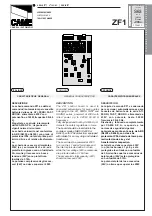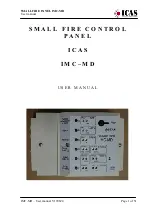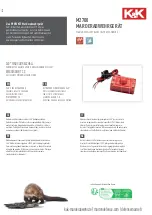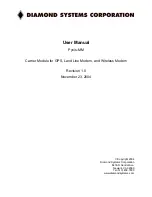
97
agility
TM
Series Soft Start User Manual
MAN-AGY-001. Version 04. 21/09/2018
Motor Suitability and Associated Considerations
The agility
TM
soft-
starter is based on the “Fairford System” of microprocessor
-based optimising soft-starters
which have been used world-wide in critical and non-critical systems. Since 1983, Fairford System soft-
starters have successfully operated with almost every type of load and environment from the Antarctic to
the Jungle. The design has proven to be both reliable and adaptable, and provides a powerful mechanism
with which to control fixed-speed induction motors. However, due to the intrinsic differences between
electronic and electro-mechanical starting systems, there are a number of simple rules and observations to
follow when using the agility
TM
soft-starter. This section introduces guidelines for the user and those
incorporating the unit as part of their system design.
Suitability
In principle, any induction motor can be started by a soft-starter. Normally, the breakaway torque of the
load should be less than the full-load torque of the motor, unless a motor with a high locked rotor torque
characteristic is employed. As a quick assessment, any load which has a low or no-load start with a
moderate starting time, or which can be started with a star-delta starter, auto transformer or other forms
of reduced-voltage starting, can be considered to be a potential application for a soft-starter
Induction Motor Characteristics
Induction motors are required to provide sufficient torque to accelerate the motor and its load from
standstill to full speed and to maintain full speed efficiently at all torque levels up to the design full load
torque. Most modern induction motors have characteristics that are wholly suitable for use with soft
starters, however, the characteristics vary considerably between different manufacturers and design types.
It is important that the motor is capable of providing sufficient torque to drive the load at all speeds
between standstill and rated speed, to enable the agility
TM
to function properly. It is particularly important
that the motor to be soft started does not have a low pull-up or saddle torque otherwise the load may not
be accelerated correctly.
The primary function of the soft-starter is to act as a torque-regulating device. It cannot apply a torque
greater than that which the motor generates. For this reason, problematic
applications for which many different starting methods have been tried but failed, may need analysis of the
motor or load performance before a soft-start can be successfully applied.
Rating
For most applications, except high inertia loads, the starting demands and the inertia of the rotating
masses are small enough to be insignificant. This means that no special consideration needs to be given to
the rating of the soft-starter, other than to ensure that it is equal or marginally greater than the rated
voltage and current of the controlled motor.
Alternatively, if the number of poles of the motor and the moments of inertia of the load (Jload) and motor
rotor (Jmotor) are known, a soft-starter will be suitable if the figures comply with the criteria given in the
bottom row of following table
Table 8.4.1
Number of Poles
2
4
6
8
Synchronous Speed (rpm)
Hz)
3000
1500
1000
750
(Jload)/(Jmotor) less than
5
15
20
25
Applications
















































